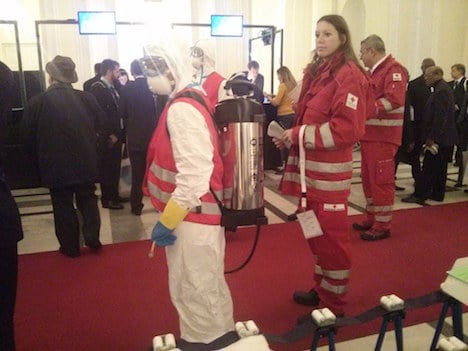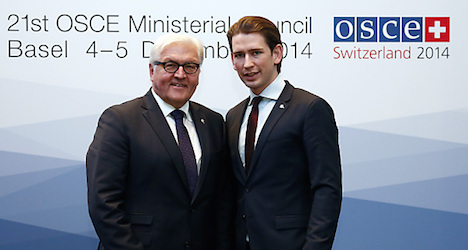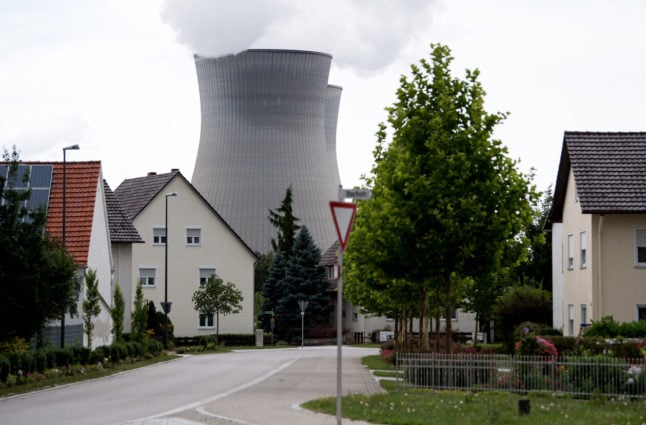Hosted by Austrian foreign minister Sebastien Kurz, the conference is expected to bring more than a hundred countries to the discussion, which will join together in a call for disarmament.
“Nuclear weapons are not only a permanent threat to all humankind but also a relic of the cold war that we must finally overcome. The international nuclear disarmament efforts require an urgent paradigm shift, not the least in light of the danger of further nuclear weapons proliferation”, said Kurz at a previous meeting in February.

Delegates to the meeting were greeted by people wearing radiation suits and carrying scintillation
detectors to measure possible radiation exposure. Photo: Paul Gillingwater
The Vienna Conference will build on an initiative launched in 2013 that draws to focus attention on the humanitarian consequences of and risks associated with nuclear weapons.
There have been two international conferences on the dangers, in Oslo, Norway, in March 2013, and Nayarit, Mexico in February 2014. Since the launch of the initiative the number of states participating in the initiative has grown from 127 in Oslo to 146 in Nayarit.

Delegates with radiation exposure could expect a decontamination spray, and any
necessary medical attention from the Red Cross. Photo: Paul Gillingwater



 Please whitelist us to continue reading.
Please whitelist us to continue reading.
Member comments